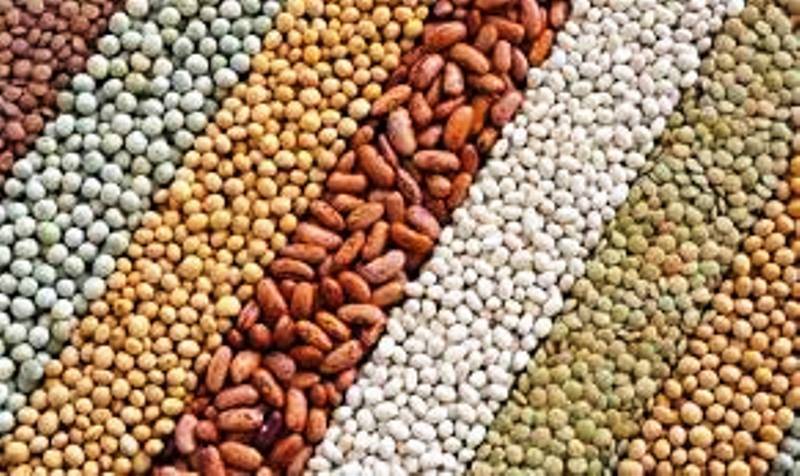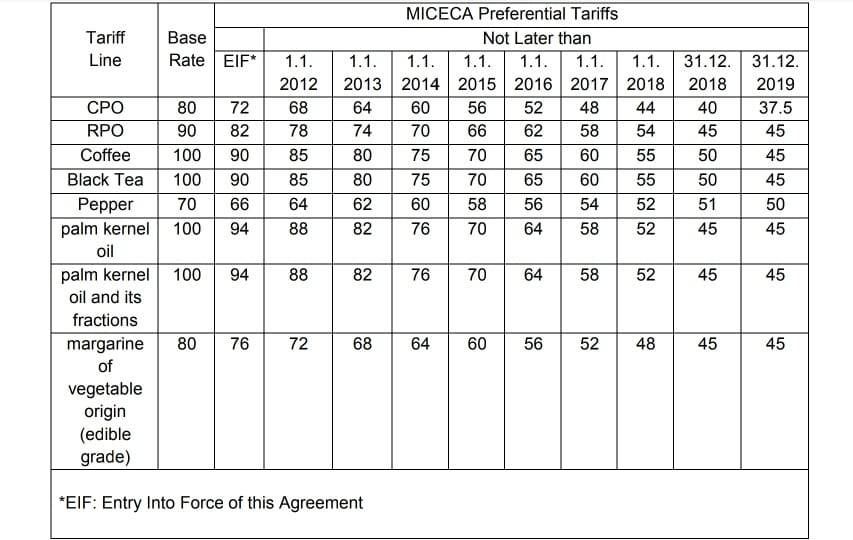
The Malaysia India Comprehensive Economic Cooperation Agreement (MICECA) that was signed on 18 February 2011 and came into force on 1 July 2011 is a comprehensive agreement that covers trade in goods, trade in services, investments, and movement of natural persons. Under the treaty, edible oils were kept subsidized.
The tariff chart of the treaty shows us that tariff on Crude Palm Oil (CPO) was at 68 % in 2012 but according to the terms of the treaty was gradually reduced by 4 % every year and after the last adjustment it stood at 37.5 % Similarly, Red Palm Oil (RPO) tariff was at 78 % in 2012 but is now at 45%. The treaty also implied that if any better tariff offers were made by India to other competing oils that offer would also be offered to palm products. Furthermore, if the applied MFN tariff rate for CPO and RPO were lower than the preferential tariff under the agreement the lower rate shall apply. These clauses prevented India from raising any kind of import duties on oils for ten years.
But the treaty has now come to an end and India is now free to trade on its terms. SEA Chairman Atul Chaturvedi said” No nation can afford to compromise its edible oil security to the extent of almost 70 percent of its annual consumption. This situation calls for corrective actions to be taken up on priority,"

The low import duty has discouraged farmers from oilseed production. The SEA is now urging the government to be self-sufficient in oil as demand is increasing for it in India and they are not wrong. According to data by the Department of Sugar and Vegetable Oils; DG, CI&S, Dept. of Commerce, Kolkata edible oil demand in 2012-13 was at 19.82 million tonnes ou of which 9.23 million tonnes were domestically produced and 10.81 million tonnes was imported which increased by one third to 25.88 million tonnes in 2017-18. out of which 10.52 million tonnes were domestically produced and 15.35 million tonnes were imported. In these years the % of imports increased from 54.54% to 59.31 %.
The association has suggested raising the tariffs on soya and sunflower oils to 45 % and crude oil to 50 %.
Chaturvedi said, "We feel the above measures would help raise local oilseed prices which in turn would enthuse our oilseed farmers besides increasing revenue for the government."
The association also sees it as an industry that could employ in these times of lockdown where there is unemployment on a large scale. The government needs to use incentives and draft policies to ramp up production. Oilseeds should also be put under the category of plantation crops will be a welcome step for the farmers.
The Niti Aaayog in its report in 2017 on Doubling Farmers’ Income Rationale, Strategy, Prospects, and Action Plan had suggested diversification of crops to increase farmers’ income in which production of oilseeds was also mentioned.
The treaty for 10 years kept all of these possibilities closed but the government now has the chance to tap into the oilseed market. "Good news is that the period of the agreements have now come to an end and India is free to raise duties," said Chaturvedi















